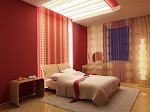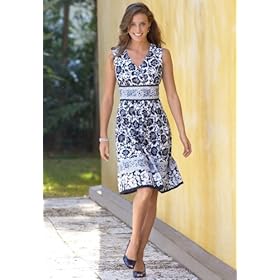
Love is in the air. Valentines Day is not very far away. I bet everyone's thinking of how this day can be made special? Dressing up for Valentines day becomes an all engrossing but a much desired activity which is looked forward for. Whether choosing a dress as a gift to someone or selecting one for own use, this should be done with a lot of thinking. So, what are the dresses that are on minds and on shop racks for all? Come, let's see!

Clothing includes a wide range of apparels. What is suitable for an age group might not go with the taste of another. So, it's always advisable to select what is preferred by the one whom you are going to give the gift. And when you are buying a dress for yourself, how can you just forget the trends. After all you don't want to look out of place, do you?
Valenti ne's Day Dresses for Teenage
ne's Day Dresses for Teenage
For Teenage Girls: These 'full-of-life” girls look for stylish and trendy dresses. If thinking of getting casuals then go for some trendy tees and jeans. Girls look beautiful in colors, so don't hesitate to experiment with colors. If opting for the formals then a ruffle dress with fringe trims and spaghetti straps, halter neck or even strapless will be adored by girls. The latest trend, of course, favors the bubble dresses. It might be a hem or a tube dress, with halter neckline or strapless, in velvet or satin, with animal prints or polka dots, a bubble dress, in anyway, is rocking. And if your valentines day celebrations include fancy dress parties then there is no less options to choose from. There are attractive cupid dresses with tank tops, corsets, stockings, halo, wings etc. Then there are look alike dresses similar to Goddess Aphrodite and Venus. There are many such valentines day costumes that you can find just by browsing the net a little.

For Teenage Boys: These boys always prefer comfortable yet trendy casuals. So tees and jeans are the hot favorites with them. And yes, before I forget, pink is the hot color for boys this season, so don't shy away from this color. The real fun for boys is when it comes to their fancy dress costumes. So, girls, if you have taken the burden to select a one for him, link this costume with his dreams and make him, at least for an evening, what he wants to be! Get an airline pilot or ships captain fancy dress for him. Give some air to his fantasies and buy a batman or superman dress. And if you want to be mischievous then get a Horny Devil Costume, of course, if you don't mind be with a one on Valentines Day
!!
Valentine's Day Dresses for Adults
For W omen: Whether teenage or a grown up, women love to dress up. So there's no dearth of beautiful dresses for them. They have on their minds- a prom dress, an evening gown, a cocktail dress or any other formal party dress. Prom dresses are a rather much favored dress- it can be any thing- a strapless, halter, beaded, or embroidered prom dress. Short dresses are also popular with them. A short satin or velvet dress- sequined, ruffled, or beaded- is simply loved by them. Same is the case with evening gowns which can be a satin gown with soft net overlay or a ruffled halter evening gown.
omen: Whether teenage or a grown up, women love to dress up. So there's no dearth of beautiful dresses for them. They have on their minds- a prom dress, an evening gown, a cocktail dress or any other formal party dress. Prom dresses are a rather much favored dress- it can be any thing- a strapless, halter, beaded, or embroidered prom dress. Short dresses are also popular with them. A short satin or velvet dress- sequined, ruffled, or beaded- is simply loved by them. Same is the case with evening gowns which can be a satin gown with soft net overlay or a ruffled halter evening gown.

For Men: For daytime outings, men always like to wear pastel shades such as light blues, creams,and browns but for a special evening like that of Valentines day, they prefer black jeans or trousers paired with a maroon or wine colored t-shirt or a shirt. However, for a formal dinner, they obviously prefer formals- a black suit, with a plain, bright shirt. A silk necktie will complete the looks. They can always be gifted with a clean pair of denims with turtle neck, round neck or a v-neck t-shirt. They'll love it all the year round.
Valentine's Day Dresses for Elderly

For elderly women: While looks of the clothes remain important, elderly people always prefer comfort in them. Back open outfits that can easily be slipped on are the best choice. For women, such back open blouse will do well. Skirts that are not too tight and have Velcros or push buttons on the side, instead of zippers and buttons, are loved by them. And yes, they do not need to be boring. Comfort can always accompany fun and fashion.

For elderly men: Polo shirts or dress shirts are best options for elderly men. Paired with dress pants, they give the perfect look. For not-so-aged people, formal suits with a slightly loose fit can also be comfortable. Wrinkle resistant fabric that never needs ironing are preferred by them. Interesting patterns and cheerful colors & prints lift their spirits and create a sense of well-being. These stylish dresses are a perfect fit for the adorable elderly.
Read more...









































 Boys should select pastels such as light blues, creams, or browns for a lunchtime date on valentines day. Jeans or baggy pants with turtleneck or v-neck t-shirt is good enough for them on casual dates.
Boys should select pastels such as light blues, creams, or browns for a lunchtime date on valentines day. Jeans or baggy pants with turtleneck or v-neck t-shirt is good enough for them on casual dates.













